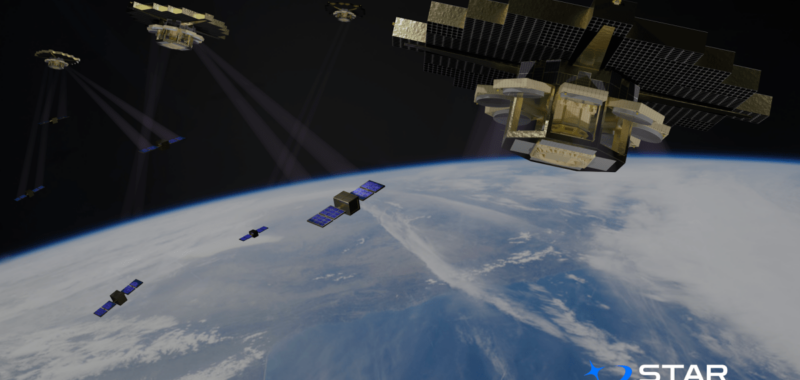Our growth as a civilization is tightly coupled to our ability to sufficiently generate ever-increasing amounts of electricity. Could the same be true in space?
Star Catcher Industries, a startup just emerging from stealth today, is betting that might be the case. The company is developing a space-based energy grid that could enable more power-intensive activities, like edge computing and direct-to-cell telecommunications, in space.
Star Catcher’s satellites will collect solar energy and re-transmit a portion of it to customers’ solar arrays — in a radiation range more efficiently converted to electricity. This beam could be dialed up or down, enabling power transmission to a variety of spacecraft; a low-cost, low-power satellite could perform more work if it knew its batteries could be recharged on demand.
The 11-person company was founded earlier this year by longtime space entrepreneurs Andrew Rush and Michael Snyder, who held leadership roles at in-space manufacturing company Made in Space, and investor Bryan Lyandvert. Rush said the genesis of the company came from looking at the common constraints on spacecraft, a set of variables called SWaP, or size, weight and power, in addition to the sheer increase in the number of satellites in low Earth orbit.
“Over the last 10 years, through the advent of lower cost launch vehicles from Rocket Lab and SpaceX, we’ve really seen the aperture open up on the size and weight portion of it,” Rush explained in a recent interview. “But power is still constrained.”
The average satellite in low Earth orbit generates on average 1,000-1,500 watts from the sun. That’s around the amount of power that a refrigerator runs on. Star Catcher envisions a future where spacecraft use similar power to a house, or more. Customers could purchase power on an annual subscription or on an as-needed basis. A space-based power grid could also help spacecraft experiencing issues with their power subsystems or solar arrays.
It could also potentially transform lunar missions: Some of the most scientifically and commercially interesting parts of the moon are also the darkest, posing a challenge for solar-powered spacecraft. But a power grid could make the problem of the long lunar night virtually disappear.
Orbital habitation and manufacturing, and other new applications with high power requirements, may also be eager to tap into the grid.
“I’m so passionate about the Artemis program, and us going and staying on the moon,” Rush said. “But to stay, you need infrastructure. What’s the most fundamental piece of infrastructure that we have on the planet? It’s power generation.”
“In space right now, we’re still going on camping trips. We’re still like Lewis and Clark charging out in the woods.”
The three founders are aiming to double Star Catcher’s 11-person headcount by the end of this year. The company is also planning to carry out a series of ground demonstrations to show they can collect power from the sun and transmit that to example satellites. If those go to plan, Star Catcher will send up a sub-scale demonstrator satellite in December 2025, in order to show that their plans will work on orbit with a client satellite.
These plans are fully funded thanks to a $12.25 million seed round co-led by Initialized Capital and B Capital, with participation from Rogue VC.
The “power nodes,” or each satellite in the Star Catcher network, are designed to field solar energy to many satellites at once. So once even one or two Star Catcher satellites are in orbit, the company plans on selling power to customers. But the end goal is building out the constellation to 200 satellites, which would provide full coverage to low Earth orbit, Rush said.

